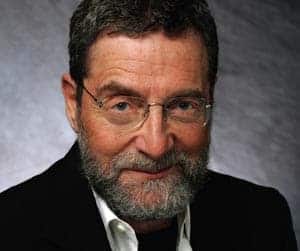Lenny Lipton is chief technology officer at REAL D, a company developing products for digital 3D imaging in Los Angeles, California

How did you first become interested in physics?
I was not like other children in my neighbourhood or school, and I wasn’t like my parents. From an early age I built things, like telephones and projectors, and painted, sculpted and spent time alone when other children were out playing. I read about scientists in the school library and dreamt of being a space explorer; and I loved the science fiction of H G Wells and Robert Heinlein. But the truth is that I don’t know how I got interested in physics. In retrospect, I’d have to say it was nature because it certainly wasn’t nurture.
Where did you study physics and how much did you enjoy it?
I got my undergraduate degree in physics at Cornell University. I started in electrical engineering but I felt the physics students were closer to my more eccentric and independently minded personality. I loved the idea of physics more than doing it; I hated problem sets with a passion. The opinions of my professors were decidedly split on the subject of my abilities – some thought I was a lost cause but a couple saw the spark of something.
How did you become interested in stereoscopic images?
When I was about 10, there was a stereoscopic boom. I became aware of 3D photography, comic books and movies. I began to do my own experiments on the polarization of light, and started designing stereoscopic projectors. For me, stereoscopic images were a thing of wonder and beauty, and I never saw the difference between the art and science of stereopsis.
How did your career develop after you graduated?
I had an independent income from song royalties (I wrote the lyrics to “Puff the Magic Dragon” while at university) and then a book that I wrote (Independent Filmmaking), which stayed in print for 20 years. So I could do whatever I wanted. I made films and wrote books for about a decade, but then one day in 1972, it suddenly occurred to me that my calling was stereoscopic imaging, and that has stayed with me for the last 35 years.
What are some of your career highlights?
Not many people have the chance to make the kind of contribution I have, and it has been through dumb luck as much as anything else. I created the electronic stereoscopic display industry – not on my own, but if I had never been born it would have taken a different shape or may have been delayed. I turned out to be a good systems designer, and I concentrated on creating an infrastructure for stereoscopic imaging after my founding of StereoGraphics Corporation in 1980. It took a decade of effort. I also turned out to be a pretty good inventor of components and I designed a very early optically compensated liquid-crystal device. That made possible CrystalEyes, the first practical electronic stereoscopic product for computer graphics and video, which is used a lot for molecular modelling. I also invented the ZScreen polarization modulator, inspired by Jim Fergasen, which is the basis for my firm’s 3D movie projector that is now in 700 cinemas worldwide.
What are you working on now at REAL D?
We need to be able to send left and right images – stereopairs – over a single satellite feed from live events to cinemas and I am working on a high quality multiplexing approach to do this. I am also working on the next generation of the projection system, but I cannot tell you any more about that. Very few people know how to do good cinema stereo photography, so I am spending some time working with the major film studios to get their creative people up to speed. I love that part of the job. Finally, we are making progress with electronic displays to produce fine stereoscopic images that can be viewed without eyewear – what people call the “holy grail” in this field.
How has your physics background helped you in your career?
I had a great education at Cornell but I was a decidedly mediocre student. I am a creative and determined person, and I got a lot smarter once I found a field I loved. I see the world becoming one in which children are pointed in the direction of money as an end in itself. I hate living in that kind of a world. Schools need to be more accepting of eccentric people with a different point of view because we are the people who make the difference. We are the people who invent.


